The Transasia ATR 72-600 which crashed into the Keelung river narrowly missed flying into high voltage power cables strung across the Keelung river. Flight into those high voltage power distribution cables would have been unsurvivable: fire would have been a virtual certainty.
The images below, from Google and from SETnews.net show that power distribution lines cross the Keelung river at a point which the ATR 72-600 would have reached had it not banked left.
The plane's wings were level approaching the power lines across the river.
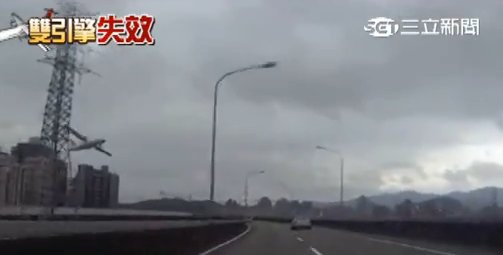
Google street view looking back from point of impact with taxi shows power lines.
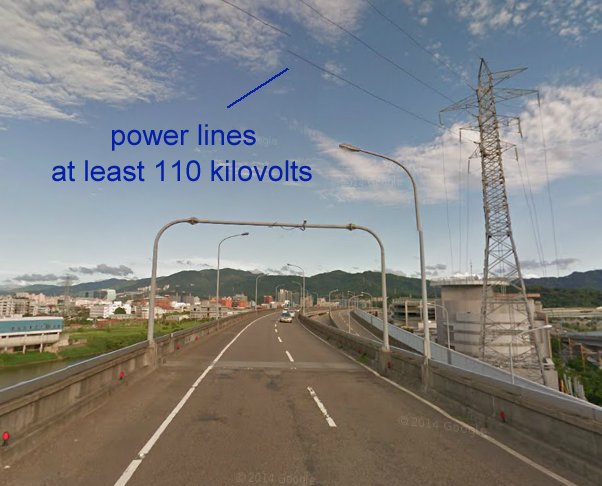
Google street view looking at point of impact with taxi and crash barrier.
Note: this is not a bridge as so many have wrongly reported. It is an elevated roadway.
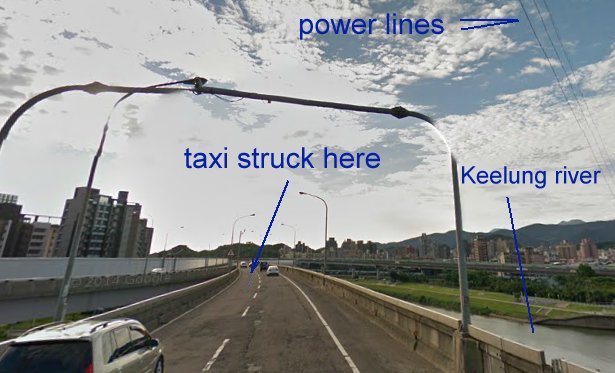
Google maps satellite view does not show the pylons and cables. They must have been installed since the area was mapped. The image below shows the approximate path of the cables.
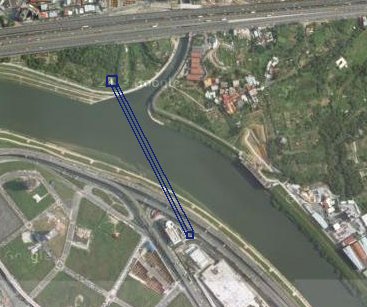
Only a full analysis of the FDR and CVR will show what happened and why. Meanwhile, the best data which can be extracted from sometimes conflicting reports shows what most probably happened.
The glide angles
Video from three sources shows the plane as seen from three viewpoints. Screenshots below have been annotated by the author to show angles of descent.
As the plane glided between buildings its angle of descent was about 15 degrees.
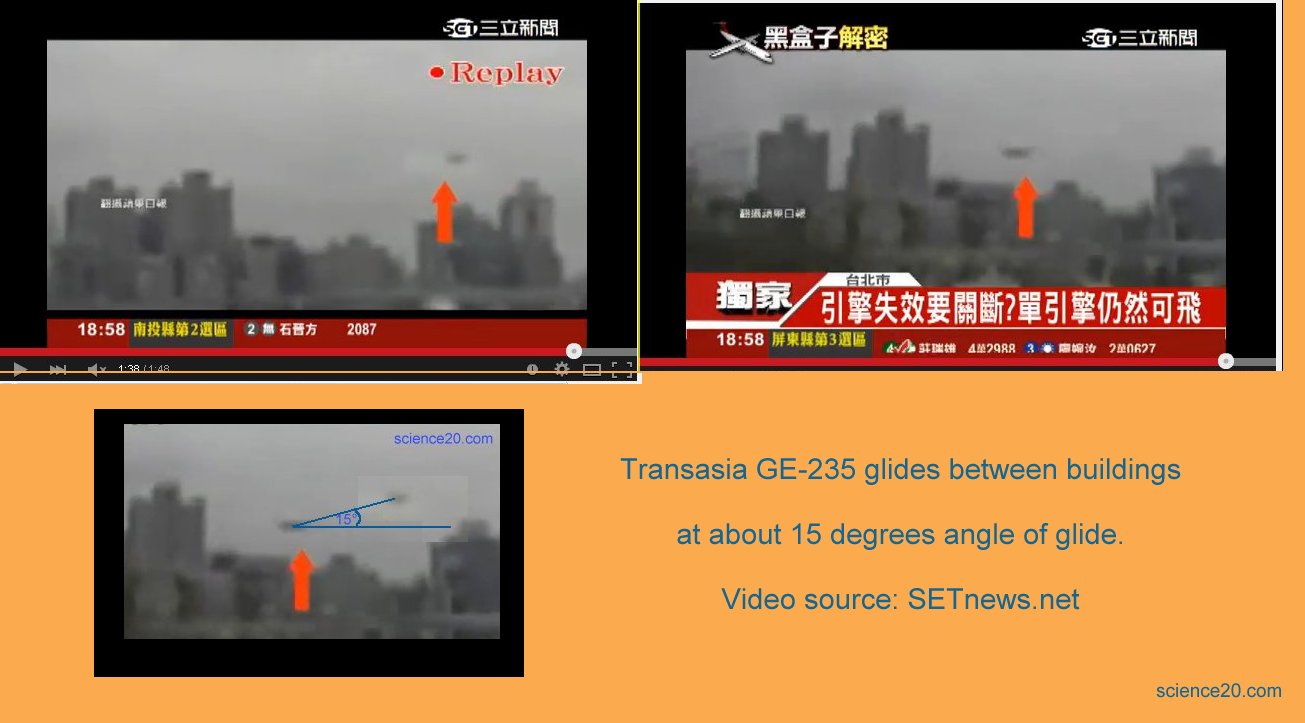
As the plane banked steeply, presumably to avoid the power lines, its angle of descent was 12 degrees.
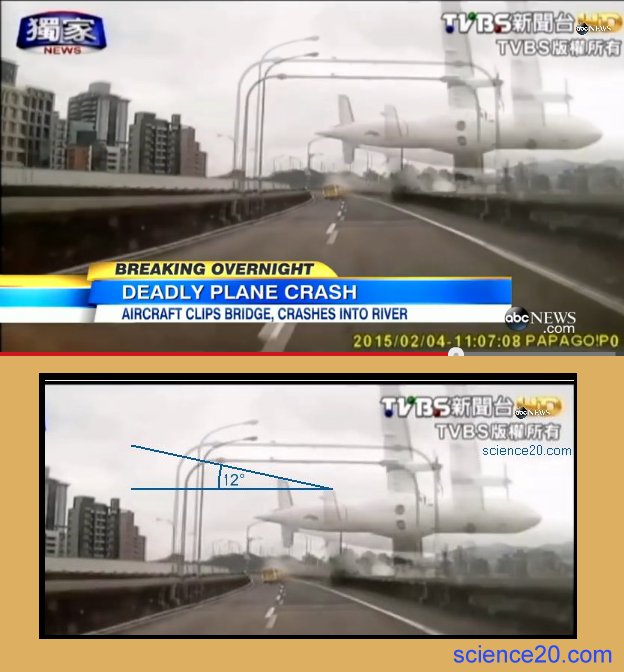
The lower angle of descent was achieved by exchanging lower air speed for temporarily slower descent speed. Video appears to show elevators raised after the sharp bank left. It appears to show that after banking left the pilot used the elevators to tighten the turn away from the power lines.
The wingtip struck first the taxi and then the crash barrier. As the plane went over the barrier the starboard tailplane impacted the barrier and was torn off. These impacts absorbed considerable energy and contributed to the survivability of the final impact.
The FDR and CVR indicate 10:54:35 — unidentified sound, 10:54:36 — recordings end. That sound was probably the tailplane hitting the crash barrier. If the CVR was in the tail behind the firewall, as is usual, then the recordings would have stopped when the tail was ripped off as it hit the river bank.
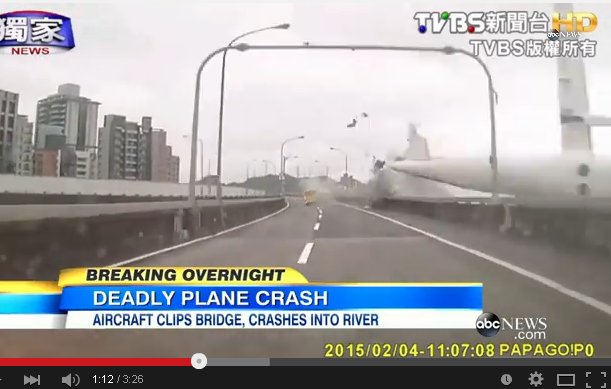
Image source TVBS
Double engine failure
The provisional FDR graph shows two most unusual wave forms for engine torque. A cyclic variation in the torque of two turbo-prop engines has many possible explanations. Possibilities are: erratic fuel starvation, prop synchronisation failure and incorrect overspeed setting. Compressor surge is usually accompanied by external flame, but none is visible in photos and videos.
Many if not most engines have governors to prevent overspeed. A typical turbo-prop plane has two governors on each engine: one to govern the rpm, a second to prevent overspeed. There is a synchronisation device which keeps propellers #1 and #2 within close limits in normal circumstances to reduce or remove the noise due to beat frequency sound waves.
A propeller synchrophaser fault may affect a good engine if trying to synchronize the good engine to the bad one, or each engine to the other.
An identical governor fault on both engines is most unlikely. However, an identical human error in the setting up of both engines is possible. The overspeed governor does nothing when testing the engine governor to maximum propeller rpm. In order to test the overspeed function the limit must be set to under 100% and the prop spun up to see if the limiter works. It is possible to have both overspeed governors set to under 100% at push back, but the condition should be detected when throttling up to take off power and prop rpm.
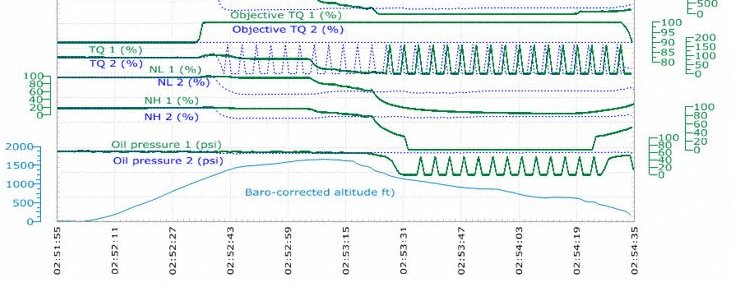
Torque fluctuations.
From FDR trace published at Aviation Herald.
If the FDR trace is accurate, and if the author is interpreting it correctly, then what it shows is that as soon as the master alarm was triggered for engine #2 the pilots increased torque demand (objective TQ) for engine #1. TQ2 shows engine #2 was hunting: engine #1 soon started to track the same hunting to a high degree of accuracy.
Probable scenario
After loss of #2 engine power the propeller feathered. The other engine then began to lose power even while increased torque was demanded. The propeller angle PLA is shown as reducing, which it would do to reduce the load on a failing engine. With engine #1 producing no effective power the fuel was shut off. The propeller did not feather but continued to windmill.
The glide angle of any plane is determined by lift over drag: L/D. Anything which increases the drag, such as a propeller either windmilling or producing no effective thrust due to an engine fault, will steepen the glide slope.
For more information about gliding, please see:
http://wright.nasa.gov/airplane/ldrat.html
.




Comments